Discovering Egypt--Cairo, the Pyramids & Alexandria
Though Egypt was the last stop on my three-month trip around the world, it was thoroughly delightful with a long series of grand moments, from Cairo and Alexandria to Aswan and Luxor.First, Cairo, with its incredible pyramids, the ones you've seen a thousand times in photos and on television or film but which are exciting to see in person, up close. We started with the "bent" pyramid, a "mistake" as the ancients were learning how to build the perfect pyramid on a base that would handle the weight. I was in good hands with an excellent guide in Cairo and Alexandria, Ahmed Shihab El Din, and Eslam Mohammed, who managed and organized my schedule.
-----
Then we moved "next door" to the old kingdom tomb of Mereruka and Titi pyramid, and continued on to more sites.
This is the "step" pyramid, of the third dynasty (2686 – 2613 BC).
Enroute between tombs, we passed some interesting street scenes.

-----
Of course, we had to pause for lunch at a restaurant with a perfect view of the three perfect pyramids we all know and the Sphinx.
The views out the front window below.
The Sphinx, of course.
After lunch, we visited the two major pyramids near the restaurant, including Menkaure's Pyramid, Khafre's Pyramid, and Khufu pyramid, all at Giza, if I've got my facts straight. In any case, here are the photos, including shots with people and at varying distances or close ups to show perspective and construction.
-----
I've ridden a camel in India, Morocco, and now Egypt, and they're still not comfortable, but I wanted to see how the pyramids would appear by approaching them from that perspective. They're most grand, and, the Egyptians are real professionals in arranging the experience.
The Sphinx, much smaller than the pyramids nearby but still fascinating.
Our hotel, Le Méridien Pyramids Hotel, within sight of the grand pyramids.
-----
Light Show at the Pyramids
-----
I wanted to see the Coptic Churches so we visited the old town, with its Jewish synagogue museum, traditional bazar and the site where tradition says Moses was plucked from the Nile, now some distance from the current location of the river. Here are a few photos of this area. You enter by passing along a cemetery.
Coptic Cairo is a part of Old Cairo which encompasses Babylon Fortress (old Roman Tower+), the Coptic Museum, the Hanging Church, the Greek Church of St George, other Coptic Churches and historic sites. It is believed in Christian tradition that the Holy Family visited and stayed in this area.
The old Roman Tower also used by the Persians and now on the entrance to the Coptic Museum.
The Hanging Church, the most famous Coptic Church, first built in the 3rd or 4th centuries.
The streets or walkways between the buildings were lined in several places by books and other publications for sale.
The site that tradition says was visited by the Holy Family.
The site where Moses was said to have been plucked from the Nile.
No photos allowed inside the synagogue.
It's believed that the foundation of the Nunnery of St. George dates from the seventh or eighth century. Today, the monastery is actually home to between thirty and forty religious women.
Wall along the cemetery.
-----
Islamic Cairo was next on our tour, with a visit to the great Mosque of Muhammad Ali Pasha or Alabaster Mosque situated in the Citadel of Cairo and commissioned by Muhammad Ali Pasha between 1830 and 1848.
The Citadel is on high ground so you can get a bird's eye view of gigantic Cairo, with a population of more than 20 million.
-----
The bazar and sidewalk cafes, the latter populated only by men in Cairo.
KFC increasingly "means" fried chicken in much of the world.
Some grand structures in the downtown area where the national museum (below) is located.
A photo of how treasurers were crammed into the tomb of the child pharaoh, Tutankhamun, an Egyptian pharaoh of the 18th dynasty, during the period of Egyptian history known as the New Kingdom. His intact tomb was discovered in 1922, and the treasurers are in the national museum but will be moved and more displayed in the new enormous museum being built near the pyramids.
-----
An evening dinner cruise on the Nile included two entertainments, a man twirling lights and a belly dancer, and the other boats and the docked restaurants on the banks of the river were most colorful.
-----
Alexandria
I took a one-day tour of Alexandria, where I saw the new library that's quite grand if not as exhaustive as its celebrated ancestor from ancient times, a lovely coast line and fort (with a delicious lunch on the water), ancient catacombs, and Pompey's Pillar from the days of the Holy Roman Empire. Amazing history. Alexandria is still a cosmopolitan city, and, my guide said that women could frequent the coffee shops and sidewalk cafes in this city.
First, a few shot of the water front and lunch spot, then some city scenes.
These cone structures were for raising pigeons/doves/some bird that's believed to aid married couples on their wedding night. Given the number, it's big business.
-----
The Alexandria Library
The Library of Alexandria was "reborn" in October, 2002 to reclaim the mantle of its ancient namesake. It's an extraordinarily beautiful building and complex for the arts, history, philosophy, and science. The ancient library flourished under the patronage of the Ptolemaic dynasty and functioned as a major center of scholarship from its construction in the 3rd century BC until the Roman conquest of Egypt in 30 BC. There was a special exhibit on a film director and also exhibits on early newspapers.
-----
Catacombs of Kom El Shoqafa, Pompey's Pillar and Serapeum
I have only one photo of the Catacombs of Kom El Shoqafa and it's outside the entrance. No photography was allowed below ground. It's a mixture of Egyptian, Greek, Roman and Christian influences and is quite interesting. Pompey's Pillar is a Roman triumphal column in Alexandria, and is the largest of its type constructed outside the imperial capitals of Rome and Constantinople. The only known free-standing column in Roman Egypt not composed of drums also is one of the largest ancient monoliths and one of the largest monolithic columns ever erected; it is 67 feet tall. The Serapeum is a Roman temple dedicated to the Greek-Egyptian god Serapis.
Outside the entrance to the Catacombs
Pompey's Pillar
-----
We also visited the Citadel of Qaitbay, a 15th-century defensive fortress located on the Mediterranean sea coast, in Alexandria, and established in 1477.

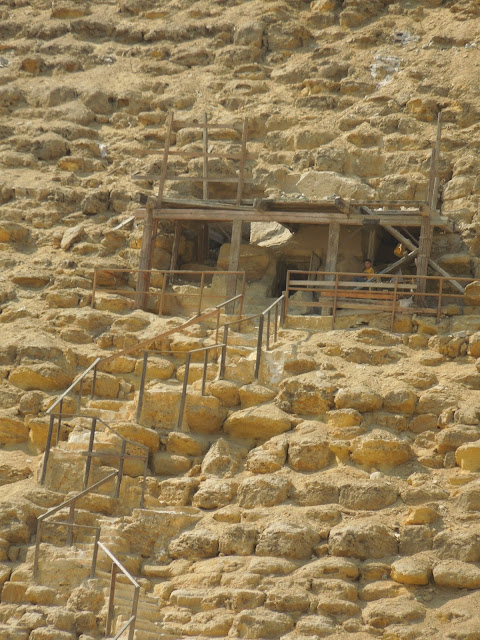



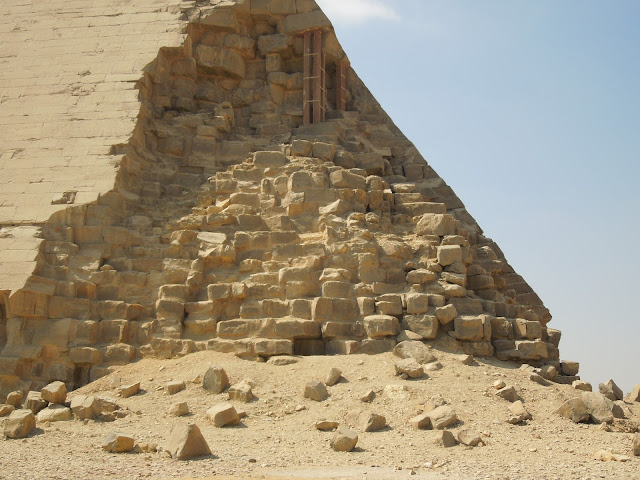












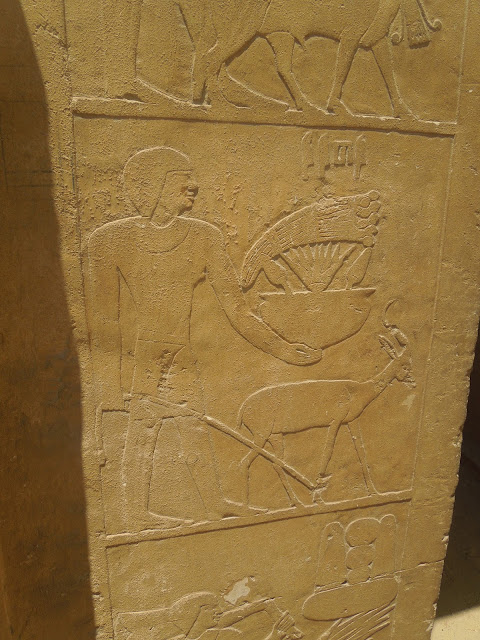































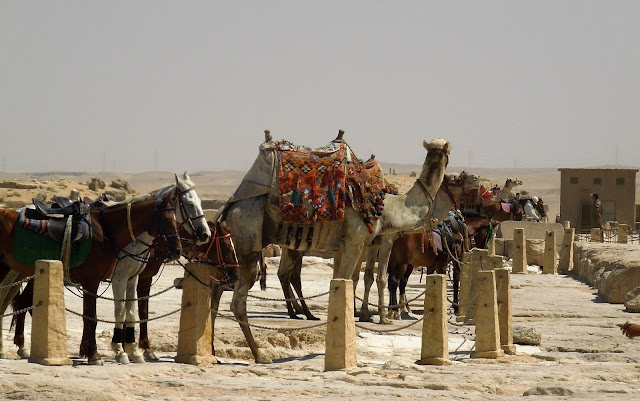
















































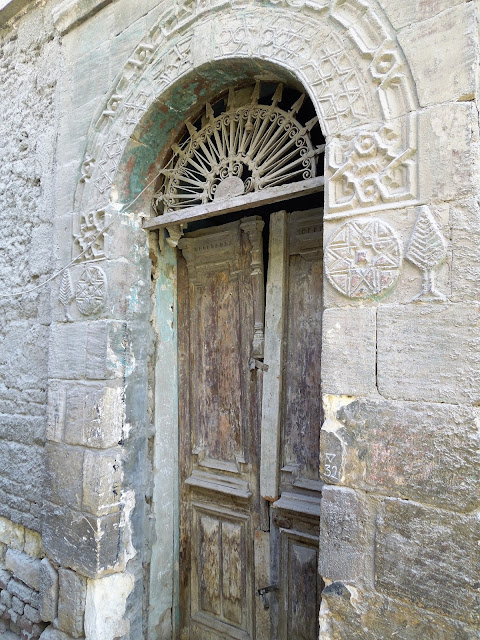
























































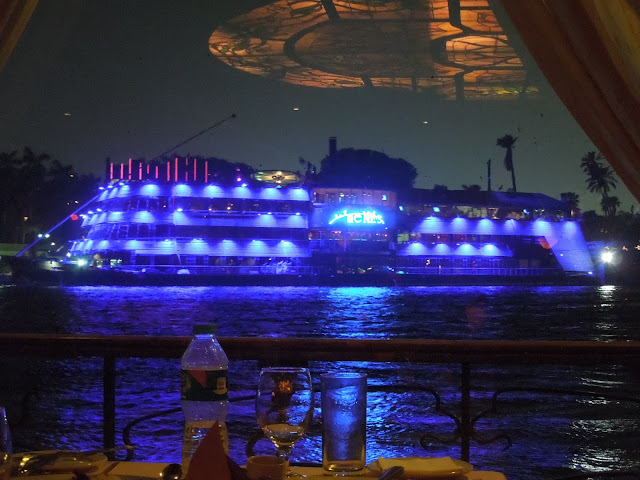






























































No comments:
Post a Comment